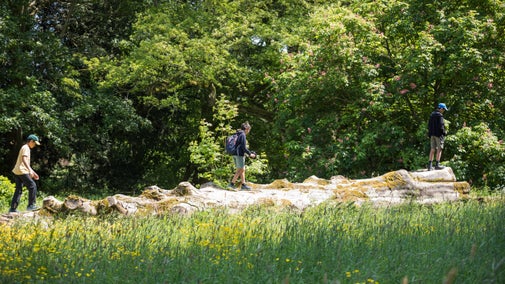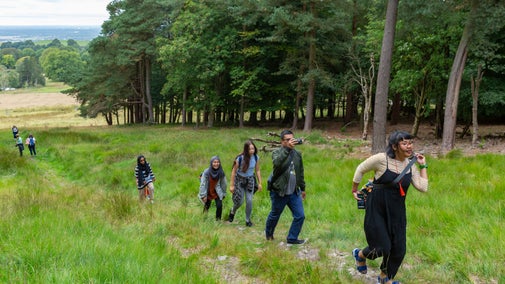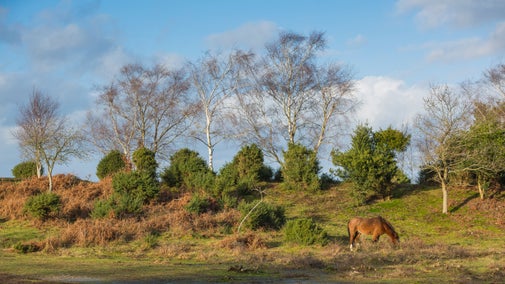
Discover more at Selborne Common
Find out how to get to Selborne Common, where to park, the things to see and do and more.

Covering over 260 acres, the landscape surrounding the village of Selborne, Hampshire, is best explored on foot. Selborne Common offers plentiful opportunities to spot wildlife, and find plants and flowers, while climbing ‘the Hangar’ is rewarded with impressive views. Beyond St Mary's Church in the east lie the not-to-be-missed valley meadows and woodland of the Lythes.
Reconnect with nature by taking a walk on the Common, made up of mixed woodland of beech, oak, ash and hawthorn. As well as sunny glades and open grassland, there’s lots of different pockets to explore.
The fields called Coneycroft Bottom, Coneycroft and the Wadden are now managed as grassland and have become rich in flowers that provide valuable nectar for a host of insects and butterflies.
A walk to the top of ‘the Hangar’ – the beech woodland that overlooks the village – will be rewarded with sweeping views across the village to the Lythes and beyond to the Weald and Downs of Hampshire, Surrey and Sussex.
You can climb to the top via various paths including the famous Zig Zag and Bostal paths.
During the summer you may see cattle grazing on Sheep Down, an ancient wood pasture where woodland, scrub, glades and grassland form a patchwork of habitats.
Villagers’ common rights allowed them to graze livestock and to cut wood from the crowns of the trees here. High Wood was traditionally coppiced to provide fuel and wood for the village.
While visiting Selborne Common, take the time to see what plants and flowers you can spot.
A range of plants thrive here, including stinking hellebore, herb Paris and several orchids, which can be found in the woodland. Flowers on the open down and in the meadow include cowslip, clustered bellflower and knapweed.

Selborne Common is home to many common woodland and scrub birds. Look up and you may be lucky enough to see red kites flying high above you.
In summer watch for the silver-washed fritillary butterfly, which has orange and red spotted wings, streaked with silver on the underside.
The open meadows of the Lythes are rich in flowers, which also attract many butterflies. Milkmaid – another name for cuckoo flower – is a common springtime plant and a particularly good food source for the orange tip butterfly.
During the summer, the meadows are splashed bright yellow with buttercups. In the wetter places, you’ll find yellow flag iris and pink ragged robin. Devil’s-bit scabious and betony are rarer species that appear at the end of the summer.

Find out how to get to Selborne Common, where to park, the things to see and do and more.
Discover the New Forest Northern Commons. With plenty to explore, find out more about what you might see on your next visit.

Plan a visit to one of the special countryside places in our care and discover the benefits of being in the great outdoors. Pack your walking boots and get ready to explore woodlands, valleys and rivers.

Explore some of the finest landscapes in our care on coastal paths, accessible trails, woodland walks and everything in between. Find the best places to walk near you.

Enjoy the varied landscapes around Hampshire, from the huge expanses of New Forest common to the wildlife-rich downland and marshes of Stockbridge.
